I’ve recently expressed hope on this blog that attitudes are changing about native fish – that anglers and conservationists are valuing the whole of freshwater diversity and not just so-called “gamefish.”
And then I open Outdoor Life magazine, and realize that we have a long way to go. A very, very long way.
The current issue of Outdoor Life (available online) features an article by Natalie Krebs celebrating “the world’s largest bowfishing tournament.” For those outside the hook-and-bullet community, bowfishing is exactly what it sounds – shooting fish with bows and arrows.
At first glance, the story is about using bowfishing for invasive carp control. I have no issue with that.
But even a cursory glimpse reveals this: photos showing piles of dead native fish, especially gar – a toothy predator that has long suffered from angler prejudice.
The article implies that removing predators like gar is “good for the river.”
False.
The story then proclaims that 40,000 pounds of dead fish from this one tournament ended up as “fertilizer.” In other words, the carcasses were buried in a field somewhere. The waste of native fish is difficult to comprehend.
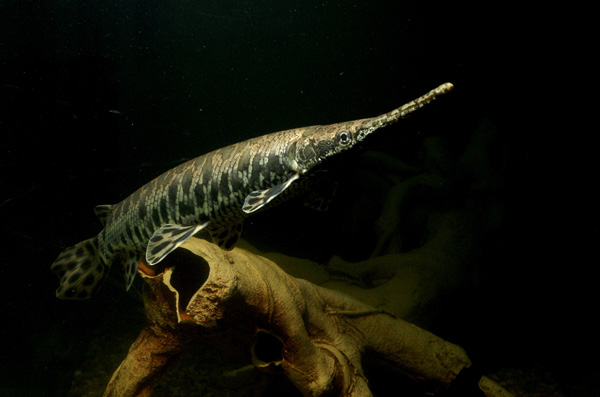
Gar are top predators, integral to river ecosystems. They possess long snouts, are covered in armor and are just flat-out cool looking. There are seven species, found only in North and Central America and Cuba.
They’re an ancient lineage: gar swam with the dinosaurs, and outlasted them. When oxygen levels are low, they can breathe air. Stand along a river in gar country, and you will see that toothy snout push above the surface as they gulp breaths.
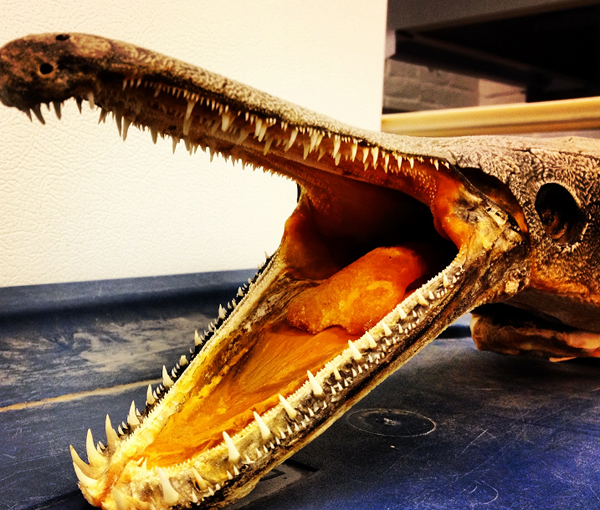
As an angler, I also have to note that gar are spectacular sport fish. I would rather catch a big longnose gar than a largemouth bass any day of the week. They strike ferociously on baits and lures, but can be difficult to hook – which adds to the challenge.
As fishing writer and native fish enthusiast Olaf Nelson writes: “Gar are bad-asses. Muscle, teeth, armor, hunger, tenacity, and confidence add up to a fish that’s a hell of a lot of fun to catch. Small or large, they fight like crazy and no matter how careful you are, they can—and will—cut you. A truly spectacular, beautiful animal.”
Unfortunately, few share Nelson’s enthusiasm. Like suckers, gar have often been accused of crimes they didn’t commit (including eating people!).
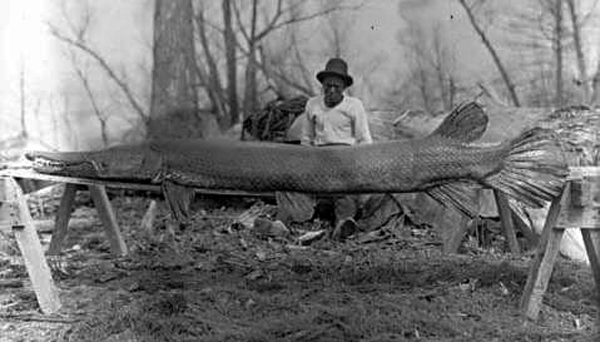
Brush away the flimsy, scientifically baseless justifications – saving gamefish, protecting children – and you’re left with this: the senseless and wasteful killing of valuable native species.
It is hard to imagine the uproar if a venerable magazine like Outdoor Life – which has been advocating “catch and release” for decades – posted photos featuring dumpsters filled with dead bass.
I can only imagine the anger – nay, rage — if hallowed trout waters suddenly allowed bowfishing – if the banks of the Madison and Silver Creek and Henry’s Fork were littered with the carcasses of rainbow and brown trout.
The shouts from anglers would echo across the country, emanating from every fly shop, fishing lodge and boat launches. State fisheries managers could not ignore the uproar. Nor could outdoor magazines.
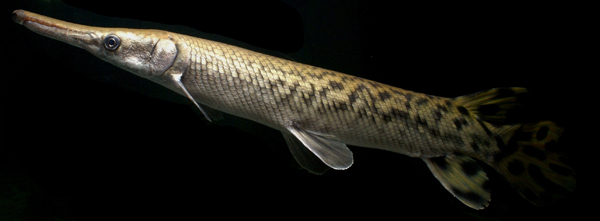
Well, folks: time to start yelling.
There is absolutely no reason gar (and suckers, and bowfins, and other native species) should not be managed like other freshwater gamefish. None at all.
The Outdoor Life story mentions the explosive rise in popularity of bowfishing. Gar populations cannot absorb unlimited take. It’s biologically unjustified.
As covered in my previous blog, there is a growing community of anglers and naturalists who value all native fish. But the reality is, this subculture is dwarfed by other angling interests.
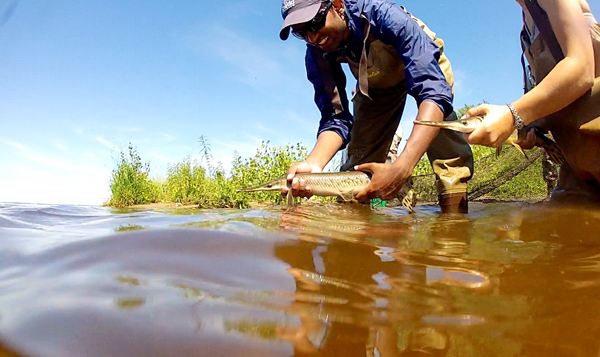
That can make the fight to protect gar and other “rough fish” seem quixotic. Who cares? Don’t freshwater conservationists have bigger issues to worry over?
Gar researcher Solomon David, one of the savviest and most effective conservation communicators I’ve encountered, tweeted this in response to the Outdoor Life article:
.@eatguineapigs seriously, practices/supporting articles like this make me believe we take 1 step forward, 5 steps backward in conservation.
— Dr. Solomon David (@SolomonRDavid) May 21, 2015
But don’t despair. This is a fixable problem. Here, another set of disturbing images pops into my mind: the historic photographs displayed on Hawk Mountain in Pennsylvania.
The images show the ridges of Hawk Mountain piled high with dead raptors: hawks, falcons, eagles. Men with shotguns stand proudly beside them.
Migrating raptors congregate at Hawk Mountain in the fall. And for many years, it was a popular “sport” to go there and shoot them. Shoot a lot of them.
At the time, this too was cloaked in the language of public service. State wildlife agencies considered raptors a menace to gamebirds. The Pennsylvania Game Commission paid a bounty of $5 for every goshawk head.
Even many progressive bird conservationists – the very people passing great legislation protecting songbirds and egrets – considered raptors inherently unworthy of protection.
A bird conservationist named Richard Pough (who coincidentally, would later become the first president of The Nature Conservancy) visited Hawk Mountain in 1929 and documented the carnage.
This led to its purchase by conservationist Rosalie Edge, who established the world’s first sanctuary for birds of prey. As she said at the time: “The time to protect a species is when it is still common.”
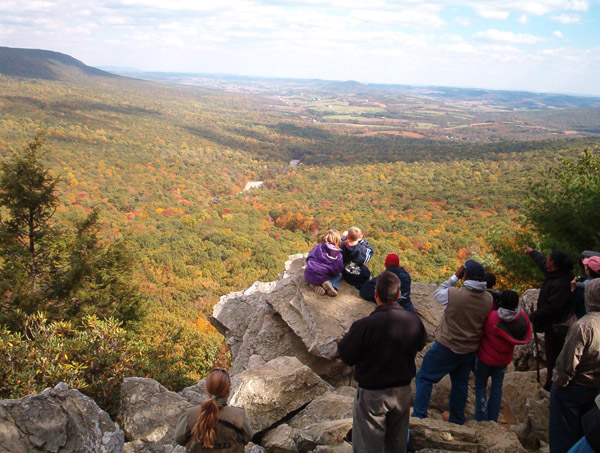
That action changed the narrative for raptor conservation. It set the stage for a constituency to address even bigger conservation challenges: DDT and habitat destruction among them. The conservation success stories of peregrine falcons, bald eagles and ospreys all can be traced back to Hawk Mountain.
There is no difference between piles of dead hawks and piles of dead native fish. In both instances, the mass killings are biologically unjustified and wasteful. They have nothing to do with thoughtful hunting and fishing.
The solution here is simple: manage gar, bowfins and other “rough” fish the same as freshwater gamefish. Use science-based limits and regulations.
Anglers can still catch them. They can still keep enough to have dinner, just as is the case with walleyes or smallmouth bass.
That seems like a common-sense solution, but I have no illusions it will come easy. Neither did the protection of raptors.
Last week, a social media storm erupted about the Outdoor Life article – and that’s reason enough for hope. There is indeed a growing legion of freshwater fish enthusiasts – garficionados, if you will – who are tired of great fish being treated like trash.
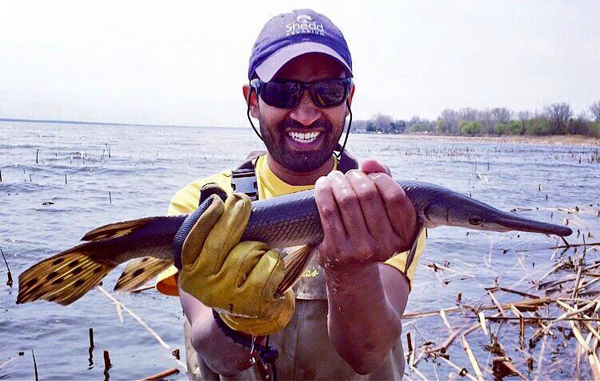
Visit Hawk Mountain Sanctuary today, surrounded by birders, and it’s hard to imagine the area piled with dead hawks. Some day, it will be the same for gar.
And while native fish face many problems, this issue is a good starting point. Now is the time to end the gar wars.
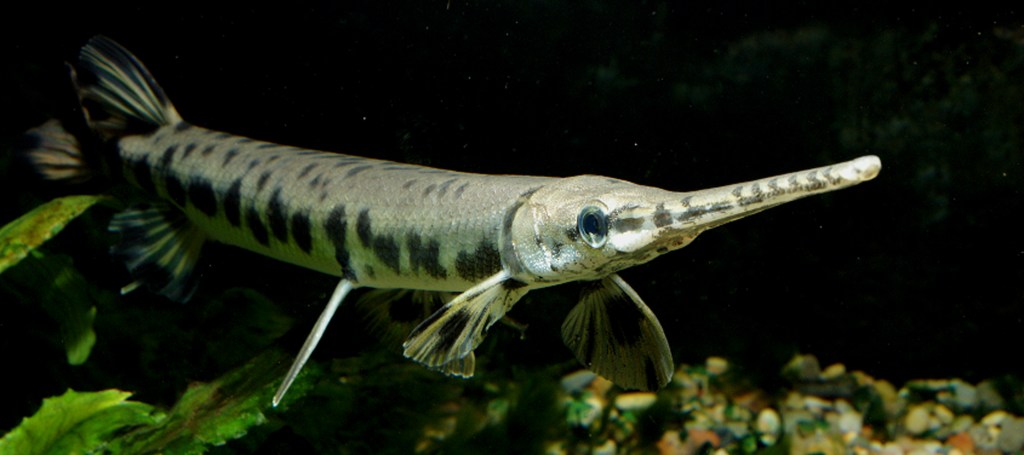



The waste of anything ie: birds, fish, plants, trees, big game, small game etc is horrible. Take what u need to eat or clothe yourself with or even just maintain the status quo, but just for sport NOT ACCEPTABLE.
Stop the slaughter, BEFORE it’s too late.
Realistically, SOME lakes have so many gar that one can hardly catch any other predatory fish (say, blue or flathead catfish, large channel cats, or bass.) We have a lake like that near me, that has for whatever reasons transitioned from being a great catfish lake to a great gar lake – if you like 24″ longnose gar. Granted that they do seem to help hold down the Asian Carp population somewhat, but you need either the really big cats, or alligator gar (rare) to take out big adult breeders.
It is difficult to remedy such a situation with normal fishing, because gar are quite difficult to hook, and tend to swim off for a good while with the bait in their teeth, not swallowed. (To quote a former Lynyrd Skynyrd member, they are not as dumb as they look!) In typical environments where gar do well, this leads to either missed hook sets or getting hung up. Now, IF you can hook them, they fight hard. Gar actually taste good, properly prepared, tho’ the meat is “tough” for a fish, and cleaning them is just hardly worth the effort. Get out tough gloves, a reciprocating saw, heavy duty tin snips, and you’d better have really strong hands…
The answer in such cases is proper management, and if proper management says take out a lot of gar, then do it. If one had a pond overpopulated with green sunfish, and wanted to restore it to balance quickly, you’d probably have to kill ALL the fish in the pond, and restock it, and no one is suggesting that for the gar. OTOH, if taking out too many gar disrupts a good fishery, that’s incorrect too…
I’ve always thought gars were neat, too.
I am the president of the Minnesota Inland Commercial Fisherman’s Association. We have formally requested stricter regulations in regards to protecting native species of roughfish. We have saw sharp declines in native roughfish populations due to recent changes in bow fishing regulations. Bowfin are very vulnerable as they will stay to protect their nests, offering an unlimited amount of shots. In many cases the spawn of these fish are what feeds the young gamefish that spawn with them. We have markets for any roughfish that is over abundant. Wasting thousands of fish is a shame. It also takes wise fish management out of the hands of fishery biologists and into the hands of the fishermen. The waste needs to end.
Retired, but I have eaten gar, backstraps are good-hard to clean but good if eaten hot, fried. Talk to Jeff Quinn, Ark. Game and Fish Comm. , he did some work on bowfishing tournaments in Arkansas. Most of the larger bowfishing tournaments in Arkansas have a refrigerated truck or large ice chests to collect edible species or give them to bystanders.
“…freshwater gamefish”? The “war” on gar is only marginally more senselessly cruel than “game” fishing, which basically seems to be having fun torturing animals.
So the outrage seems misplaced. The entire “sport” fishing concept should be challenged. It wouldn’t be tolerated if it were dogs, cats, racoons or other mammals being speared and then tossed off to survive their injuries if they are lucky.